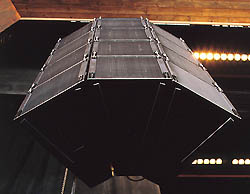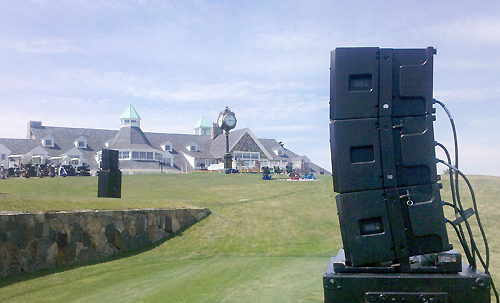
Incidentally, when we say distortion “products,” we’re referring to the contribution of harmonic and non-harmonic energy that’s the product of a flawed transfer-function of electrical power being inaccurately converted to acoustical power.
We don’t want all of this extra energy coming out of our drivers, but it’s going to be there anyway.
Driver designers minimize distortion by choosing optimal materials, while mix engineers can utilize the system well below its peak output power to keep distortion at very low levels, where it belongs.
Distortion is not just related to output power, but is a function of output power, at least at this time of technological development.
Factor 5: Linearity
This is not as rigorously defined as frequency response. One manufacturer touting “linearity” might mean something quite different from that of another.
I define linearity as the ability of a loudspeaker to maintain its performance characteristics over a range of operating levels. Each time the input power jumps from 100 watts to 1,000 watts, such as during the impact of a snare or kick drum, if the loudspeaker increases its distortion, alters its frequency and phase response, or does not respond with precisely 10 dB greater acoustic output, then it will be exhibiting one, or more, non-linear characteristics.
Conversely, if none of its response parameters alter at all – other than an increase in output level – then the loudspeaker exhibits linearity.
No loudspeaker is truly linear throughout its full power and frequency range, though some come close. Most cone and compression drivers exhibit significant non-linearity as they approach the upper extent of their power handling, and also in respect to the program material.
A given loudspeaker might be good at accurately reproducing a single 100 Hz sine wave with low distortion, for example, but may “fall apart” when trying to reproduce the complexity of multiple musical tones that all occur together. Therefore, detecting distortion by stimulating the driver with only a single sine wave does not tell the whole story.
Some acoustic analyzers provide multi-tone sources for distortion measurement, as well as frequency sweeps and automatic power level increments. Both are excellent tools for approximating real-world musical passages.
Factor 6: Transient Response
This is the time that it takes a loudspeaker to respond to the input stimulus, and how quickly it stops producing energy after the stimulus ceases. As with the other parameters in this article, the answer will always be a function of the frequency of the stimulus.
Some analyzers can display a 3D waterfall plot, which depicts the variations in the start and stop time versus frequency, as well as magnitude-versus-frequency of the steady-state period in which the loudspeaker has settled after initial acceleration, and before the stimulus has ended.

